Exploring the Allure of Korean Drama Series
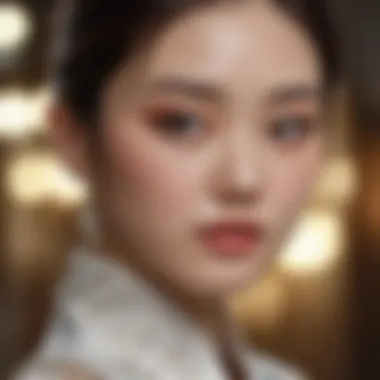
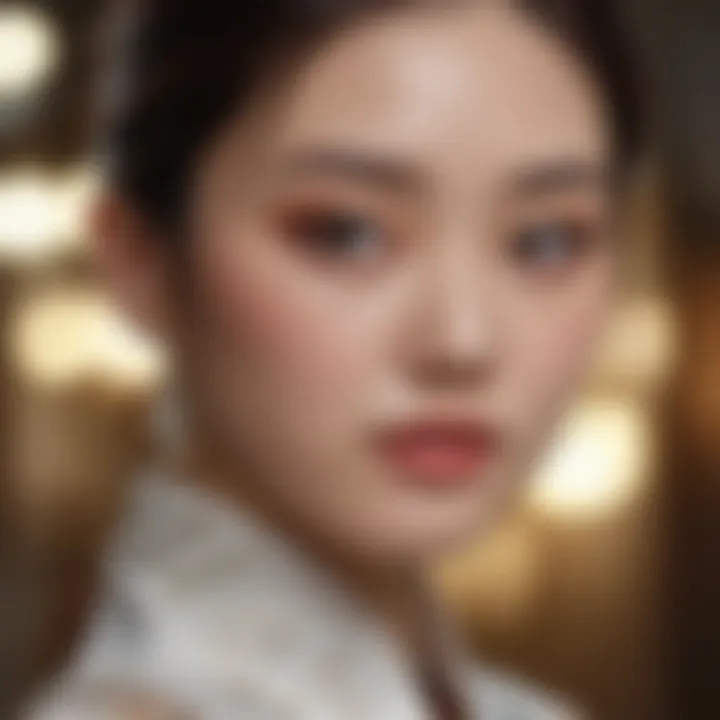
Intro
Korean drama series have become a global phenomenon, attracting millions of viewers around the world. Their unique storytelling elements, intriguing plots, and relatable characters resonate particularly with women of all ages. These series offer a rich blend of drama, romance, and cultural insights that make them appealing to a diverse audience. This analysis aims to dissect various aspects of these dramas, including their narrative style, cultural significance, and influence on beauty and fashion trends.
As we embark on this exploration, it is essential to highlight the key points that will be discussed. We will look into the narrative structures that define Korean dramas, analyze character developments that captivate audiences, and understand the cultural contexts that underpin these stories. Moreover, we will explore how these series have impacted beauty and fashion, creating trends that traverse beyond the television screen. With this comprehensive approach, we aim to shed light on the ongoing popularity and significance of Korean dramas in contemporary society.
Tips and How-Tos
When delving into the world of Korean dramas, it helps to understand the backdrop against which these stories unfold. Here are some tips to appreciate them more fully:
- Watch with subtitles: Korean dramas are often filled with cultural references and linguistic nuances. Subtitles can provide a more enriching experience.
- Explore the genres: While romantic comedies dominate, other genres like thriller, historical, and fantasy offer unique narratives worth exploring.
- Engage with the community: Platforms like reddit.com have various communities dedicated to discussing episodes, characters, and fan theories.
Skincare Routines for Different Skin Types
A significant element often portrayed in these dramas is skincare. Characters typically have flawless skin, reflecting the dedication to skincare present in Korean culture. Here are some routines based on skin types:
- Oily Skin: Focus on oil-free moisturizers and lightweight gels. Keywords like "gel-based cleanser" and "salicylic acid" are often used in these routines.
- Dry Skin: A richer cream and hydrating serums work best. Ingredients like "hyaluronic acid" are commonly featured.
- Sensitive Skin: Gentle, fragrance-free products should be the priority. Look for soothing ingredients like "aloe vera" and "green tea".
Haircare and Styling Basics
Similarly, haircare also plays a vital role in shaping characters’ images in Korean dramas. Most female leads showcase glossy, well-styled hair that reflects their personality. Here are basic haircare tips:
- Regular Washing: Use sulfates-free shampoo to maintain moisture.
- Deep Conditioning: Incorporate hair masks weekly for nourishment.
- Heat Protection: Always use a heat protectant before styling to prevent damage.
Sustainable Practices
As more viewers become aware of the environmental impact of fashion choices, sustainable practices in the beauty and fashion industry have gained traction. Here are some insights:
Eco-Friendly Fashion Brands
Several brands are making strides toward sustainability. These brands focus on ethical sourcing and environmentally friendly materials. Some notable ones include:
- Patagonia
- People Tree
- Everlane
Tips for Sustainable Grooming
Making sustainable choices in grooming is also essential. A few tips include:
- Choose eco-friendly packaging for beauty products. This can reduce waste substantially.
- Opt for natural ingredients in makeup and skincare to ensure a minimal environmental footprint.
Celebrating Diversity in Beauty
Korean dramas often reflect cultural influences that celebrate diversity in beauty. This aspect enriches the viewing experience and encourages acceptance and appreciation of different standards.
Inclusive Beauty Brands
The growing trend of inclusivity is seen with brands like Fenty Beauty, which offers a wide range of shades suitable for various skin tones. Their philosophy resonates with the narrative themes in many dramas about individuality and acceptance.
Cultural Influences on Fashion
The fashion seen in Korean dramas derives from various cultural inspirations, merging traditional elements with modern aesthetics. This interplay creates a unique style that is now emulated globally.
Ultimately, by understanding these aspects, one can appreciate the full spectrum of the allure Korean drama series offer. This analysis will unwrap these themes in detail, providing insights into why they resonate so profoundly with audiences worldwide.
Prologue to Korean Drama Series
Korean drama series have emerged as a significant cultural phenomenon in recent years. Their storytelling style, production quality, and engaging characters appeal to viewers worldwide, particularly women of all ages. Understanding Korean dramas can provide valuable insights into contemporary social issues, diverse relationships, and cultural narratives.
This introduction serves as a gateway into the intricate world of Korean dramas. One important consideration is their ability to blend various genres, including romance, comedy, and thriller, which attracts a broad audience. The series often reflect societal values and norms while simultaneously challenging them, making them not just entertainment but a mirror of modern life.
Key benefits of exploring Korean dramas include:
- Cultural Understanding: They offer a glimpse into Korean culture, traditions, and social dynamics.
- Empowerment Themes: Many dramas portray strong female leads overcoming obstacles, resonating deeply with women.
- Escapism: These series provide an escape from daily life, allowing viewers to experience different realms of emotion and conflict.
Moreover, Korean dramas are not just confined to South Korea. Their reach is global, with localized versions and subtitles catering to diverse languages and cultures. Engaging with these shows opens up a space for conversations about identity, beauty standards, and societal expectations, inviting viewers to reflect on their lives while following compelling narratives.
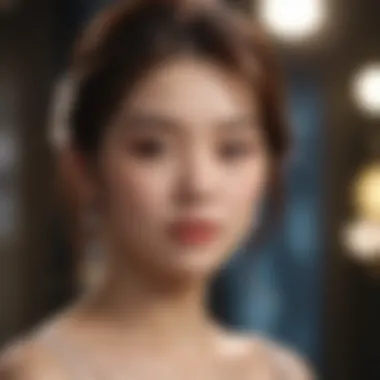

As we delve deeper into the allure of Korean drama series, we will uncover various aspects that contribute to their success and popularity, making them an essential study for anyone interested in global pop culture.
Historical Context
The historical context of Korean drama series is vital for understanding their development and significance in both local and global landscapes. This section gives insight into the origins and evolution of these shows, offering a foundation that emphasizes how cultural, social, and political factors have molded their narratives over the years.
Origins of Korean Dramas
Korean dramas trace their beginnings to the early 1960s when the first television dramas were broadcast. This period marked a slow but steady rise in domestic production, influenced by traditional Korean storytelling forms like gugak and pansori. The initial dramas were mainly adaptations of folklore or popular literature, which reflected the social norms and values of their time.
As television became more accessible, the medium began to evolve. The late 1980s saw a notable increase in productions when the government began to support the entertainment industry. The shows from that era introduced themes centered around family, moral values, and societal challenges. The 1983 drama "Misaeng" is recognized as one of the pivotal dramas that helped define modern storytelling styles. The importance of these beginnings cannot be understated, as they established a framework for what would become the Korean Wave, or Hallyu, later on.
Evolution Over Decades
The evolution of Korean dramas through the decades showcases both their adaptability and their cultural significance. During the 1990s, Korean dramas experienced a surge in popularitiy. The historical dramas, or sageuk, gained a significant audience, often featuring events from Korea's past. Titles like "Jumong" and "Dae Jang Geum" not only captivated local viewers but also attracted international attention, paving the way for the global spread of Korean culture.
In the 2000s, with the advent of the internet and social media, Korean dramas reached audiences worldwide. Titles like "Boys Over Flowers" and "Descendants of the Sun" became cultural phenomena. This era emphasized romantic comedy and melodramatic elements, capturing the emotion and complexities of love and relationships that resonate with a primarily female audience.
The 2010s and beyond have shown a shift towards more diverse narratives, tackling real social issues while maintaining the essence of romantic subplots. Shows like "Crash Landing on You" reflect contemporary themes, such as North-South Korean relations and cross-cultural experiences. This evolution highlights the impact of changing societal values and the increasing global influence of Korean dramas.
"Korean dramas provide a lens through which viewers can understand societal norms, aspirations, and challenges, making them relevant across various cultures."
The historical context of Korean dramas is rich and complex, illustrating how these series have continuously evolved to reflect the changing Korean society while also influencing global viewers. Understanding this backdrop enriches the appreciation for the narratives presented and the cultural values embedded within them.
Key Characteristics of Korean Dramas
Korean dramas are distinguished by several iconic traits that contribute to their widespread appeal. Understanding these characteristics is essential for anyone who wishes to grasp why these series resonate profoundly with audiences, especially women. The nuances of narrative techniques, character development, and cinematic artistry are critical in crafting engaging stories that engage viewers.
Narrative Techniques
The narrative structure used in Korean dramas often diverges from Western storytelling methods. They frequently employ a mix of serialized storytelling and episodic formats. This blend allows for ample character exploration, giving viewers a chance to form connections with the cast. The use of cliffhangers at the end of episodes cleverly draws audiences back for subsequent installments.
Typically, these dramas span between 12 to 24 episodes, which creates a compact yet rich storyline. Viewers can follow the arcs of relationships, personal growth, and conflicts that develop over time. These elements lead to a satisfying emotional journey. The influence of traditional Korean storytelling, with its emphasis on moral lessons and cultural values, can also be observed in the plots.
Character Development
Characterization is another area where Korean dramas excel remarkably. Each character is usually crafted with distinct traits, background stories, and motivations. This depth invites viewers to invest emotionally in their journeys. Often, the protagonist undergoes significant personal transformations, facing challenges that are relatable and engaging.
The supporting characters are not mere background figures. They also undergo development and often have complex interactions with the main leads. This layered character study provides a holistic view of the interpersonal dynamics that make Korean dramas compelling. For many viewers, these characters feel familiar and real, enhancing the viewing experience and fostering relatable connections.
Cinematic Techniques
The visual presentation in Korean dramas is striking. High production values are evident through exceptional cinematography, color palettes, and art direction. Directors often employ varied camera angles and creative shot compositions to capture emotions and key moments vividly.
Moreover, the use of music and sound design enriches the atmosphere. Soundtracks often feature popular K-pop artists or ballads that resonate with the themes of the show. These musical choices heighten emotional responses, making pivotal scenes even more impactful.
In summary, the key characteristics of Korean dramas—narrative techniques, character development, and cinematic techniques—together create a unique and captivating viewing experience. This interplay not only attracts diverse audiences but also builds a loyal fanbase, significantly contributing to the success of this genre. Understanding these elements can greatly enhance the appreciation of Korean dramas in the global entertainment landscape.
Themes and Motifs
Themes and motifs play a crucial role in the narrative framework of Korean dramas. They not only shape the viewer's experience but also provide insights into social values and cultural nuances. Understanding these underlying elements can unveil why these dramas resonate deeply with audiences, particularly women of various ages. Moreover, themes can evoke a wide range of emotions, making the viewing experience more relatable and enriching.
Romance and Family Dynamics
Romance is perhaps the most ubiquitous theme in Korean dramas, often intricately woven with family dynamics. These connections enrich plots and create emotional stakes.
In many series, the portrayal of love is deeply idealistic yet relatable. Characters often face obstacles that reflect real familial pressures, career struggles, or societal expectations. This blend enhances viewers’ emotional investment, offering them a chance to reflect on their own lives. Within this framework, we see multifaceted representations of romantic love—from innocent crushes to deep, fulfilling partnerships.
Family dynamics are equally essential. Whether it is the support of a loving parent or the complications of sibling rivalry, these interactions depict authentic relationships. K-dramas often delve into how familial bonds can either empower or strain romantic relationships, making them complex and engaging. This duality not only adds depth to the storylines but also mirrors the audience's diverse experiences.
Some key points regarding romance and family dynamics include:
- Exploration of unconditional love within families
- Romantic relationships that evolve through challenges
- Representation of societal expectations affecting personal choices
Social Issues and Cultural Commentary
Korean dramas have emerged as a powerful medium for addressing social issues. They frequently incorporate elements of cultural commentary, provoking thought and discussion among viewers.
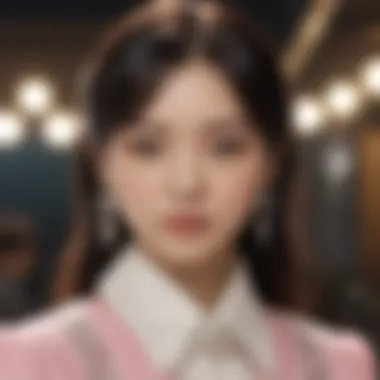
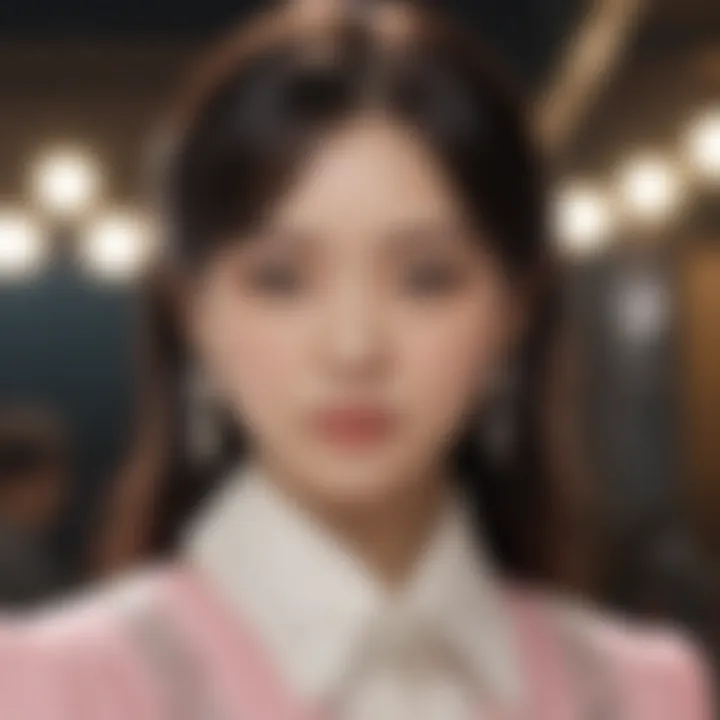
Many series tackle subjects like class inequality, gender roles, and modern societal pressures. For instance, narratives may highlight the challenges women face in both personal and professional environments, reflecting broader issues in society. By integrating these themes, Korean dramas foster empathy and understanding, encouraging audiences to engage with pressing issues beyond their entertainment value.
Another important aspect is the portrayal of mental health. Characters often navigate emotional struggles, breaking down stigmas around seeking help. This representation has the potential to raise awareness and promote discussions on mental well-being among viewers.
Some significant elements to recognize in social issues and cultural commentary are:
- Engaging storylines that challenge traditional gender roles
- Representation of mental health issues and the journey toward healing
- Reflection of societal values and aspirations through character arcs
The ability of Korean dramas to mirror real-life issues allows audiences to see reflections of their own situations, making the narratives more relevant and impactful.
Together, the exploration of romance, family dynamics, and social issues illustrates the richness of themes and motifs found in Korean dramas. This multifaceted approach not only captivates viewers but also fosters deeper discussions, ultimately contributing to the genre's continued popularity.
Cultural Impact and Global Reach
Korean dramas have transcended their origin, evolving into a significant cultural force worldwide. This section addresses how these series influence not only entertainment habits but also broader cultural perceptions. The particular charm of Korean dramas lies in their engaging narratives, relatable characters, and the ability to blend traditional values with modern societal issues. This unique combination resonates with a wide audience, fundamentally affecting global television trends and popular culture.
Korean Wave Phenomenon
The Korean Wave, or "Hallyu", represents the surge of South Korean culture across the globe. This phenomenon started in the late 1990s and has gained momentum ever since. At the heart of this wave are Korean drama series. They do not simply entertain; they promote an understanding of South Korean culture, language, and social values.
- Factors Contributing to Hallyu:
- The rise of social media platforms facilitates easy access to Korean content.
- Increased availability of subtitles and dubbing in various languages enhances viewer engagement.
- Streaming services like Netflix and Viki make it easier to discover diverse dramas.
Korean dramas often contain themes of family, love, and moral dilemmas, which resonate universally, allowing international viewers to connect emotionally with the characters and their journeys. In particular, series like Boys Over Flowers and Crash Landing On You ignited this interest and expanded the reach of dramas beyond Asia.
"Korean dramas are not just entertainment; they are a window into the values and celebrations of a culture interconnected with the world."
International Audience Engagement
The global appeal of Korean dramas also stems from their strategic engagement with viewers from different cultures. When drama creators design their stories, they consider diverse audience perspectives. This effort ensures that themes remain relatable.
Key aspects of international audience engagement include:
- Diverse Storytelling: Korean dramas explore a variety of topics, from historical narratives to contemporary romances, appealing to different age groups and preferences.
- Cultural Exchange: By integrating elements of Western pop culture, such as modern music styles and social themes, dramas attract a wider audience.
- Fan Interactions: The rise of online communities allows fans to discuss episodes extensively, sharing opinions and insights, further promoting the content.
The engagement does not end after viewing; it spurs curiosity about South Korean culture. An international audience often seeks to learn about the language, food, and traditions, sparking a cycle of cultural exchange that enhances the overall impact of Korean dramas.
Fashion Trends in Korean Dramas
Fashion has become a significant aspect of Korean dramas, shaping viewer perceptions and influencing global style trends. The visual representation of characters not only reflects personal identity but also serves as a medium through which stories are communicated. In this section, we will take a closer look at how fashion is intricately woven into the narratives of these dramas.
Costume Design and Aesthetics
Costume design in Korean dramas is essential for establishing the world in which the characters live. Each outfit is carefully selected to enhance the character's persona while reflecting cultural elements. Designers showcase a vast range of styles, from traditional hanbok to modern attire, providing a visual feast.
The aesthetics often evolve according to the themes explored in the series. For instance, a romantic drama may use soft colors and flowing fabrics to evoke feelings of warmth and intimacy. In contrast, a thriller may feature darker hues and structured silhouettes that align with the plot’s tension. This strategic use of costume design plays a role in engaging the audience and deepening their connection to the story.
"Costumes not only define characters but also narrate their journeys through visual storytelling."
The selection of fabrics and patterns can also offer insights into characters’ socioeconomic backgrounds or their emotional states. Audiences become attuned to these subtleties, making costume design a powerful storytelling device.
Influence on Contemporary Fashion
Korean drama fashion often transcends the screen, influencing contemporary styles and trends around the world. The distinct looks showcased in series like Goblin, Crash Landing on You, and Itaewon Class have led to a boom in popularity for various styles. Viewers frequently seek to emulate the looks of lead characters, leading to increased sales in clothing and accessories related to these dramas.
Many brands have capitalized on this phenomenon, collaborating with production studios to promote their products through featured placements in dramas. This synergy between fashion and storytelling not only provides revenue for brands but also allows fans to feel a sense of connection with the characters through fashion.
Moreover, social media platforms such as Instagram and Pinterest are flooded with posts showcasing styles inspired by these series. Fashion influencers and actresses often share their reinterpretations of on-screen looks, making accessibility to these trends easier for the average viewer.
In summary, the influence of Korean drama fashion extends beyond aesthetics; it shapes cultural discussions around beauty standards and self-expression. As viewers continue to embrace these styles, it highlights the broader significance of fashion in our society and its role in individual identity.
Beauty Standards Depicted in Korean Dramas
The portrayal of beauty standards in Korean dramas is significant for many reasons. This aspect highlights cultural dynamics and societal expectations in South Korea. The characters in these dramas frequently embody specific beauty ideals that resonate with local and international audiences. These standards often include notions of youthfulness, flawless skin, and a slim figure. By presenting these ideals, Korean dramas contribute to shaping perceptions of beauty across various platforms.
Portrayal of Ideal Beauty
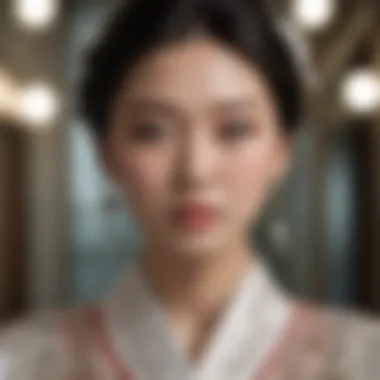

In Korean dramas, the depiction of ideal beauty is often synonymous with specific physical traits such as porcelain skin, perfectly styled hair, and a petite frame. This representation serves several functions. First, it reflects societal beliefs about attractiveness that are deeply ingrained in Korean culture. These portrayals often draw upon traditional aesthetics that prioritize youth and vitality, conditions that are frequently depicted in romantic leads and supporting roles alike.
Moreover, these beauty standards are not just visual but also emotional. Characters who embody these ideals are often showcased in positions of power, love, and admiration. This creates a narrative link where beauty translates into happiness and success, heavily influencing the diverse audience's mindset. As viewers engage with these characters, they tend to form aspirations based on their aesthetics, effectively intertwining personal desires with media representation.
Diversity and Inclusivity Challenges
While Korean dramas have gained popularity globally, they still face considerable challenges regarding diversity and inclusivity. The narrow portrayal of beauty often excludes a broad range of body types, skin colors, and ethnic backgrounds. This inconsistency leads to issues of representation in the media. As a result, many viewers, particularly women from diverse backgrounds, may feel underrepresented and undervalued.
The industry has made some strides to include a broader spectrum of characters. However, the traditional beauty standards still dominate major productions. There is a growing conversation within the community around this topic. Discussions on platforms like reddit.com and facebook.com highlight the need for authentic representation that resonates with real-life diversity.
"Korean dramas have the power to shape beauty perceptions, but they must also accept diversity to reflect reality more accurately."
As these conversations evolve, many hope that future narratives will prioritize inclusivity while still captivating the audience with their storytelling. By broadening the scope of representation, the appearances of diverse characters in Korean dramas could encourage societal acceptance of various beauty forms, enhancing their relatability and power.
In summary, the portrayal of beauty standards in Korean dramas is a complex interplay of cultural ideals and societal expectations. While they succeed in captivating audiences, the need for a diversified approach becomes imperative for evolving beauty norms in Korean media.
Noteworthy Korean Drama Series
Korean drama series hold a significant weight in the culture of entertainment within South Korea and beyond. Through the years, these series have not only showcased the intricacies of relationships and societal norms but have also defined and influenced popular culture. It is essential to explore noteworthy Korean drama series to understand their impact better. Such dramas provide a lens into the changing values, preferences, and emotional landscapes of viewers. They also highlight the narrative trends and production styles that have evolved over time.
Impactful Series From the Past
Several series have left an indelible mark on audiences and shaped the future of Korean dramas. A few standout examples include:
- Winter Sonata: This series played a pivotal role in the early 2000s Korean Wave. It blends romance with melodrama, stirring deep emotions in its viewers. The profound themes of love and loss resonate internationally, contributing to its widespread appeal.
- Dae Jang Geum (Jewel in the Palace): This historical drama introduced global audiences to Korean history and cuisine. Its influence extended beyond television, inspiring interest in Korean food and culture. The series demonstrated the potential for storytelling that transcends cultural barriers.
- Descendants of the Sun: A modern romance with elements of action and military themes, this series attracted a diverse audience. With its strong lead characters and engaging plotlines, it has proven that Korean dramas can mix various genres effectively.
The impact of these series goes beyond mere entertainment. They created opportunities for cultural exchanges and strengthened Soft Power, allowing Korea to articulate its narrative in the global arena.
Recent Hits and Their Success
Newer series continue to sustain and expand the popularity that their predecessors established. Recent hits include:
- Crash Landing on You: This series showcases a unique love story between a South Korean woman and a North Korean soldier. Its popularity can be attributed to its innovative storyline and high production values, alongside the exploration of complex themes like cultural division and human connection.
- Itaewon Class: Focusing on themes of resilience, ambition, and social justice, this drama resonated with younger audiences. Its setting in the bustling district of Itaewon allows for rich cultural commentary that reflects contemporary societal issues and aspirations.
- Squid Game: While distinct from traditional drama formats, it represents a shift in genre and narrative style. The series became a cultural phenomenon, illustrating darker socio-economic themes through a thrilling storyline, making it a landmark in global viewing habits.
The success of these recent series shows that Korean dramas are adaptable, often reflecting changes in societal values and interests. This adaptability ensures a continual evolution, keeping audiences engaged around the world.
Future Trends in Korean Dramas
The landscape of Korean dramas is evolving rapidly, influenced by changes in audience preferences and global trends. Understanding future trends in this genre is essential for both creators and viewers alike. As Korean dramas solidify their place on the global stage, they must adapt to new storytelling techniques, diverse narratives, and international markets. This section outlines the significance of these upcoming trends, as well as their potential impact on the genre.
Shifts in Narrative Style
Recent years have shown a noticeable shift in the narrative style of Korean dramas. Traditionally, many dramas adhered to a formula that balanced romance, comedy, and melodrama. However, creators are now experimenting with non-linear storytelling and more complex characters. Viewers see a mix of genres, such as thriller, fantasy, and even dark comedy, which keep the audience engaged and on their toes.
Many productions, like The King: Eternal Monarch, present intricate plots combined with character-driven narratives, enticing layers of mystery and fantasy. This trend towards bold storytelling allows for richer character development and deeper themes, tackling issues such as identity, morality, and societal expectations. Korean dramas are moving away from predictable scripts and instead challenging viewers with thought-provoking content.
In addition to changing themes, the increasing influence of web series formats is shaping storytelling. Shorter episodes and season-based structures encourage narratives that unfold at a faster pace, making the drama more accessible. Audiences are quickly absorbed by the content, leading to binge-watching habits. This style resonates particularly well with younger generations seeking engaging and instantaneous entertainment.
Incorporating Global Trends
With the world becoming increasingly interconnected, Korean dramas are beginning to draw inspiration from global media trends. The infusion of elements from Western shows is notable. By integrating familiar tropes without sacrificing cultural authenticity, producers cater to a broader audience.
One such trend is the collaboration with international creators. Co-productions with countries like the United States, Japan, or even European nations add layers of diversity and insight into storytelling. Therefore, dramas such as Crash Landing on You highlight this collaboration by blending various cultural elements and perspectives, further broadening the drama's appeal.
Additionally, there is a rising interest in addressing universal themes that resonate beyond cultural boundaries. Topics such as love, loss, and ambition are part of many international stories. Korean dramas are taking this to heart, creating plots that feel relevant not just to local viewers but to an international audience. It can also be observed that there is a deliberate effort to depict more diverse narratives, featuring characters that represent various backgrounds, ensuring inclusivity.
The evolution of Korean dramas is not merely a response to trends; it serves as a reflection of a society embracing change while remaining grounded in its cultural roots.
Overall, understanding future trends in Korean dramas reveals a landscape rich with innovation and creativity. These shifts highlight an interplay between local narratives and global influences, keeping viewers fascinated and engaged. As the genre grows, the keen interest from audiences worldwide promises an exciting future for Korean dramas.
Ending
The conclusion section serves as a vital component of this exploration into Korean dramas. It ties together the various elements discussed throughout the article, offering a comprehensive view of their impact and significance. As we reflect on the allure of Korean drama series, it is essential to highlight how these shows encapsulate not only entertainment but also cultural identity and societal issues.
Reflection on Korean Dramas' Cultural Relevance
Korean dramas carry a weight that transcends mere storytelling. They reflect contemporary social dynamics, aspirations, and conflicts. By examining the cultural relevance of these series, we gain insight into how they resonate with audiences on multiple levels. Here are some facets to consider:
- Cultural Reflection: Korean dramas often mirror societal norms and shifts. Topics such as family values, romance, and professional life are universally relatable yet distinctly portrayed within the context of Korean culture.
- Global Influence: The Korean Wave has propelled these dramas to international fame. This phenomenon indicates a growing curiosity and appreciation for Korean culture, leading to a broader acceptance and celebration of diversity in entertainment.
- Empowerment and Representation: Many series depict strong female characters who defy traditional roles, providing a sense of empowerment. This shift encourages viewers, especially women, to engage with narratives that reflect their own aspirations and challenges.
- Community Building: The global fanbase surrounding Korean dramas creates communities where viewers can share their thoughts, critiques, and fandom. Platforms like Reddit and Facebook serve as hubs for discussions, fostering connections among fans.
"Korean dramas are not just shows; they are cultural phenomena that redefine relationships and societal norms on a global stage."
In summary, the conclusion encapsulates the essence of Korean dramas, emphasizing their ability to engage, provoke thought, and foster connections. This significance extends far beyond entertainment; it offers a window into the evolving narratives of culture, identity, and community in today's interconnected world.







